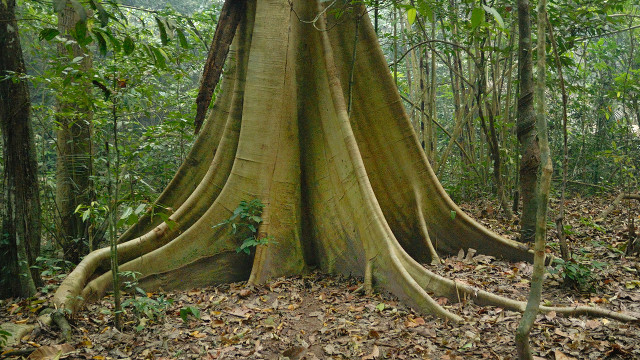SUMMARY
This is AI generated summarization, which may have errors. For context, always refer to the full article.

MANILA, Philippines – There’s a new wildlife critical habitat in town.
A 3,250-hectare (32.5 sqm) forest in Adams town, Ilocos Norte has been named Adams Wildlife Critical Habitat (AWCH) under an Administrative Order signed by Environment Secretary Ramon Paje.
The new title gives the forest added protection in recognition of the rich biodiversity and importance of the forest as an ecosystem.
Known as the “last frontier of dipterocarp forest” in Ilocos Norte, AWCH boasts of majestic dipterocarps, a family of hardwood trees like mahogany and yakal – trees cut down to make furniture or construction materials.
The Adams forest is home to threatened species like the Philippine falconet, Philippine hanging parakeet, Philippine brown deer and Philippine warty pig. Rare flora grow there including jade vines and giant tree ferns.
As a declared critical habitat, AWCH will now enjoy protection from destructive activities like the dumping of waste products, illegal occupation of parts of the habitat, quarrying, mineral exploration and extraction, burning and logging.
Managing a critical habitat
The DENR administrative order (DAO) declaring the forest’s new status now empowers the DENR regional executive director of the Ilocos Region to engage with other groups in protecting and conserving AWCH.
They can also delegate the management of the critical habitat to the local government of Adams after enhancing its capacity and resources for the task.
The DAO requires the creation of the AWCH Management Plan, which should lay out strategies and steps for the sustainable development of the critical habitat. These include rehabilitation, community organization, environmental education and ecotourism.
Paje emphasized how the DAO should serve as a platform for stakeholders to collaborate with one another for the sake of the forest.
“The DAO will enjoin the participation of all stakeholders from planning to the implementation process, encouraging them to be sustainable in their efforts as they will also stand to benefit the most from the health of the environment,” he said.
The forest will give back a hundred-fold whatever protection it receives, he added. Local governments and other stakeholders rely on the natural resources and raw products from the forest.
Engagement from the public and private sector will better protect the forest even as ecotourism and other human activities are pursued. – Rappler.com
Dipterocarp tree image from Shutterstock
Add a comment
How does this make you feel?
There are no comments yet. Add your comment to start the conversation.